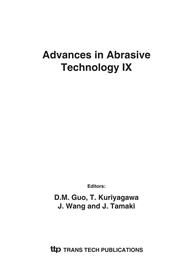p.649
p.657
p.663
p.669
p.675
p.681
p.687
p.693
p.699
A Physical Machining Accuracy Predicting Model in Turning
Abstract:
During the Machining process of a part, along with the generation of new surfaces, various machining errors are produced. These machining errors depend on the characteristic of the manufacturing process system, as there are so many undetermined factors in the process system, it is very difficult to determine the machining accuracy of the workpiece. To the operator, the final accuracy of the part is very ambiguous, he can only consider the shape of the workpiece, and machining accuracy always be controlled by selecting different sets of cutting parameters. So the machining process is always time-consuming and costly. Therefore, it is very necessary to establish the accuracy predicting model to the workpiece. In this paper, According to the characteristic of turning, tool nose is abstracted into a “tangential point”, “three instantaneous centers” method is presented to get the reality shape of the workpiece. Using this method, and with the demarcating the errors in process system, the workpiece shaping model including multi-error is established. The model can not only describe the physical state of the workpiece, but also calculate the machining accuracy of the workpiece conveniently. In this paper, ‘three instantaneous centers’ method is developed to get a workpiece reality shape in turning. Using this method, the workpiece shaping model including multi-error is established. The model can not only describe the physical state of the work-piece, but also calculate the machining precision of the work-piece online.
Info:
Periodical:
Pages:
675-680
Citation:
Online since:
January 2007
Authors:
Keywords:
Price:
Сopyright:
© 2007 Trans Tech Publications Ltd. All Rights Reserved
Share:
Citation:


